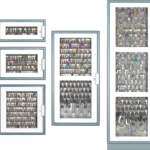In 2012, three Barnes Jewish Hospital (BJH) employees were the victims of assaults that happened within days of one another. All of the incidents took place in the early morning hours as the employees walked from remote parking areas to the hospital campus.
In one case, a nurse was stopped on the street by a passerby in a car looking for directions. When she approached the car to offer help, she was robbed.
The BJH campus is an urban one located near downtown St. Louis hotspots. City streets pass through the campus, making it a busy location. Like any inner-city institution, BJH is vulnerable to crime. That comes with the territory, but employees were shocked.
“There was just an outrage,” says Margaret “Margie” Brine, BJH’s director of public safety. “How could this happen?”
RELATED: Creativity, Problem Solving Help Barnes-Jewish Hospital Director Stand Out
Brine and her staff set about reviewing each incident and as it turned out, the attacks happened on a public street on which there were no hospital security cameras. That’s when Brine came up with the idea for a “safe corridor” that would allow employees to walk to the hospital campus without fear of falling prey to an assault. Brine recommended adding bike officers to the existing bike unit so that officers could be deployed during early morning hours when hospital staff began to arrive at work. She also requested BJH add cameras to the pedestrian walking paths so they could be monitored by the BJH communication dispatch center.
The safe corridor plan was well received and senior management approved the hiring of six additional bike officers to bring the unit to 14 officers. The new staff members now patrol the walkways from the parking areas to the hospital from 4:30 to 7:30 a.m. As part of the safe corridor plan, 30 high-resolution digital cameras were added to monitor pedestrian pathways. This project was completed in May 2013 and there have been no significant incidents since.
“We’re based in an urban area. Safety isn’t taken for granted, but it’s not something that’s a big issue and that’s a testament to her success,” Patterson says of Brine’s safe corridor project. BJH is now building walkways from its new parking garages to the hospital campus, which should eliminate the number of pedestrians crossing the city streets and reduce the likelihood of people being struck by cars, another concern on a busy city campus.













